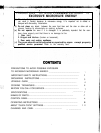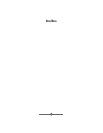
UTENSILS GUIDE
This section lists which utensils can be used in the microwave, which ones have limited use
for short periods, and which ones should not be used in the microwave.
Recommended
,
l
Microwave browning dish
-
Use to brown the exterior of small items such as steaks,
chops, or pancakes. Follow the directions provided with your browning dish.
a Microwavable
plastic
wrap
-
Use to retain steam. Leave a small opening for some
steam to escape and avoid placing it directly on the food.
l
Paper towels and napkins
-
Use for short-term heating and covering; these absorb
excess moisture and prevent spattering. Do not use recycled paper towels, which may
contain metal and could ignite.
@Glass and glass-ceramic bowls and dishes
-
Use for heating or cooking.
*Paper
plates
and
cups
-
Use for short-term heating at low temperatures. Do not use
recycled paper, which may contain metal and could ignite.
@Wax paper
-
Use as a cover to prevent spattering.
l
Thermometers
-
Use only those labeled “Microwave Safe” and follow all directions.
Check the food in several places. Conventional thermometers may be used on
microwave food once the food has been removed from the oven.
Limited Use
@Aluminum foil
-
Use narrow strips of foil to prevent overcooking of exposed areas.
Using too much foil can damage your oven, so be careful.
oceramic, porcelain, and stoneware -Use these if they are labeled “Microwave Safe”.
@Plastic
-
Use
only
if labeled “Microwave Safe”. Other plastics can melt.
Not Recommended
l
Glass jars and bottles
-
Regular glass is too thin to be used in a microwave. It can
shatter
and
cause
damage and injury
*Paper
bags
-
These are a fire hazard, except for popcorn bags that are designed for
i
microwave use.
I
*Styrofoam
plates
and cups -These can melt and leave an unhealthy residue on food.
l
Plastic storage and food containers
-Containers such as margarine tubs can melt in
the microwave.
SAVE THESE INSTRUCTIONS
5


















